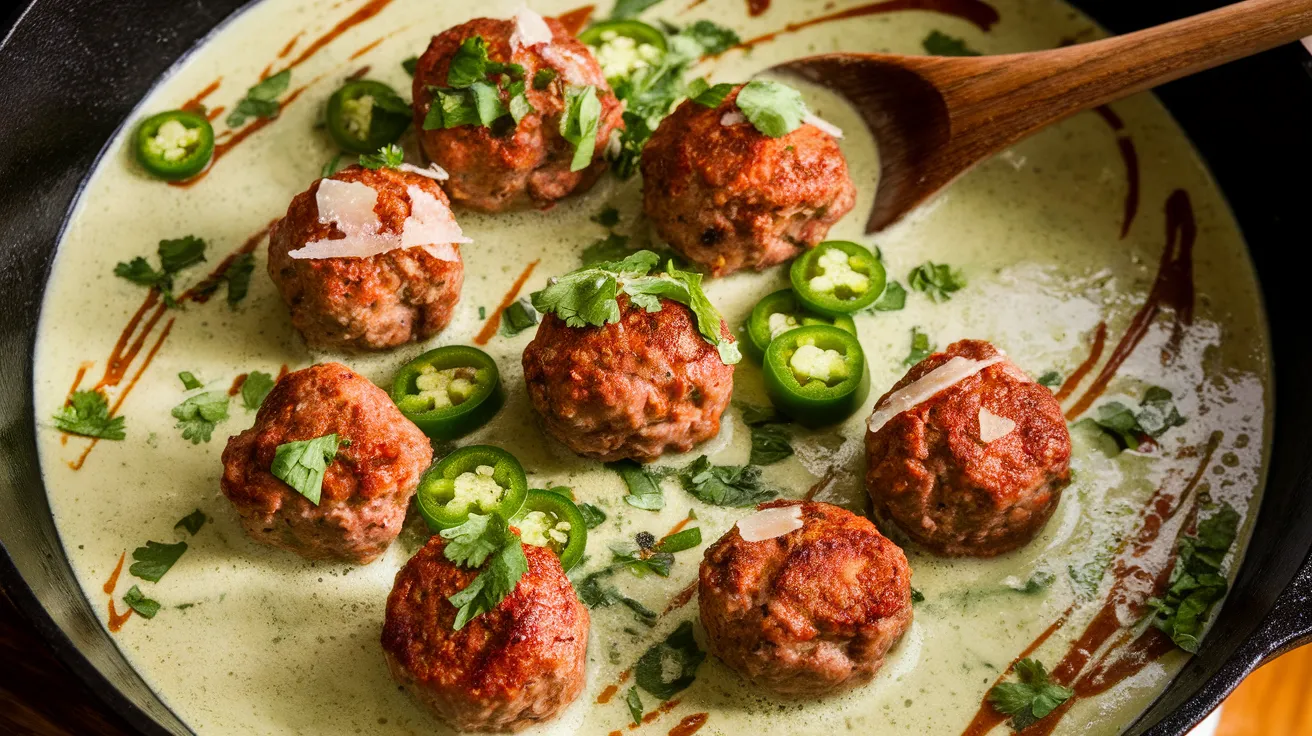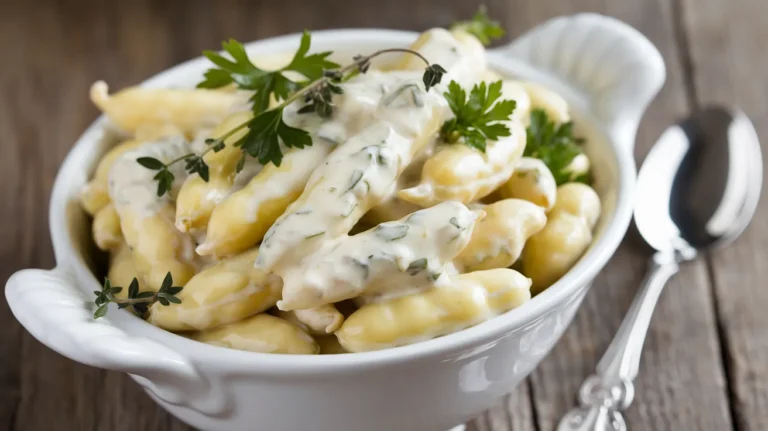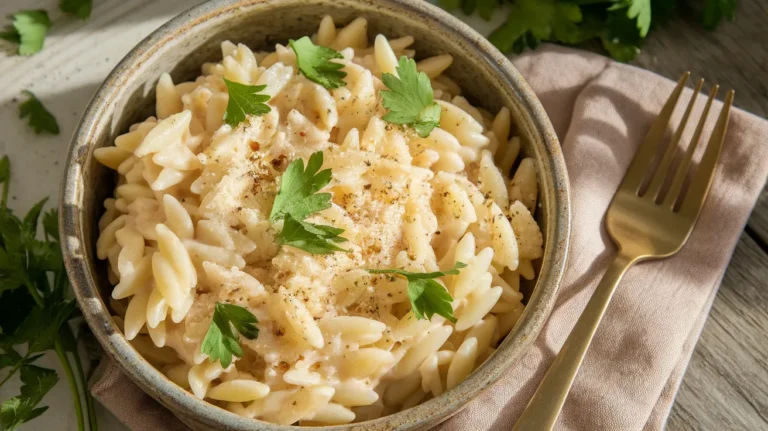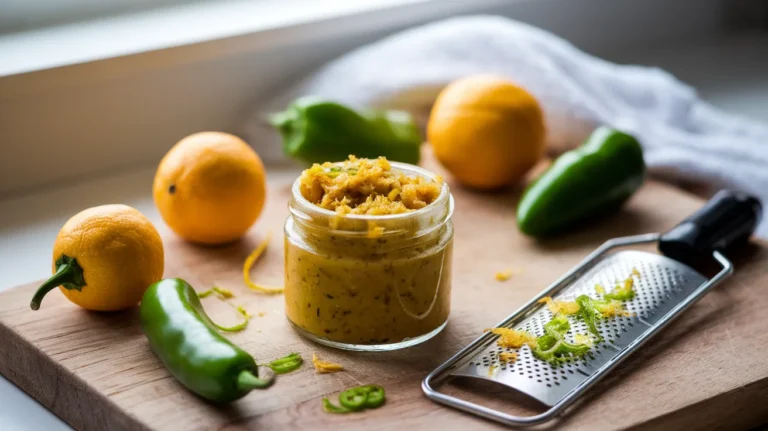This incredibly flavorful sauce for jalapeño meatballs combines the perfect balance of creamy richness and zesty heat that will elevate your dinner game. Our tested sauce for jalapeño meatballs recipe delivers restaurant-quality results with foolproof techniques that guarantee success every single time.
Recipe Info Bar
SERVES: 4 | PREP: 15 MIN | COOK: 20 MIN | TOTAL: 35 MIN
Ingredients
For the Sauce Base
| Ingredient | Amount | Notes |
|---|---|---|
| Heavy cream | 1 cup | Room temperature works best |
| Butter | 3 tablespoons | Unsalted preferred |
| Garlic cloves | 4 large | Minced fresh |
| Yellow onion | 1 medium | Finely diced |
Jalapeño Elements
| Ingredient | Amount | Notes |
|---|---|---|
| Fresh jalapeños | 3-4 medium | Seeds removed for mild heat |
| Pickled jalapeños | 2 tablespoons | Chopped, plus 1 tbsp juice |
| Jalapeño powder | 1/2 teaspoon | Optional for extra heat |
Flavor Builders
| Ingredient | Amount | Notes |
|---|---|---|
| Chicken broth | 1/2 cup | Low-sodium |
| White wine | 1/4 cup | Dry variety |
| Parmesan cheese | 1/2 cup | Freshly grated |
| Fresh lime juice | 2 tablespoons | About 1 lime |
| Cilantro | 1/4 cup | Fresh, chopped |
| Salt | 1 teaspoon | To taste |
| Black pepper | 1/2 teaspoon | Freshly ground |
Detailed Step-by-Step Instructions for Sauce for Jalapeño Meatballs
Phase 1: Essential Prep Work (5 minutes)
Step 1: Prepare Fresh Jalapeños Safely Put on disposable gloves to protect your hands from capsaicin oils. Wash each jalapeño under cold running water. Place the jalapeño on your cutting board and slice off the stem end. Cut the pepper in half lengthwise, exposing the seeds and white membrane inside. For mild heat: Use a small spoon to scrape out all seeds and white parts. For medium heat: Leave about half the seeds. For spicy: Keep most seeds. Dice the jalapeño halves into pieces no larger than 1/4 inch. This size ensures even cooking and prevents overpowering bites in your finished sauce for jalapeño meatballs.
Step 2: Perfect Garlic Preparation Peel each garlic clove by placing it under the flat side of your knife and gently pressing down until you hear a crack. The skin will loosen and peel off easily. Trim off any brown spots or green shoots (these taste bitter). Place the peeled cloves on your cutting board and mince them finely using a rocking motion with your knife. The pieces should be no larger than 1/8 inch. After mincing, let the garlic sit for 2-3 minutes. This waiting period allows enzymes to activate, creating more complex flavors that will enhance your sauce for jalapeño meatballs.
Step 3: Onion Dicing Technique Cut off both ends of the onion and remove the papery outer skin. Cut the onion in half from top to bottom. Place each half cut-side down on your cutting board. Make horizontal cuts about 1/4 inch apart, stopping just short of the root end. Then make vertical cuts 1/4 inch apart from the root to the top. Finally, slice across these cuts to create small, uniform dice. Even pieces cook at the same rate, preventing some from burning while others stay raw.
Step 4: Measuring and Organizing Measure your heavy cream and let it come to room temperature – this takes about 10 minutes. Cold cream added to hot ingredients can curdle your sauce. Measure the chicken broth and white wine into separate containers. Grate your Parmesan cheese using the small holes of a box grater. Pre-grated cheese contains anti-caking agents that prevent smooth melting. Have all ingredients within arm’s reach of your stove before you start cooking.
Phase 2: Building the Flavor Foundation (8 minutes)
Step 5: Perfect Butter Temperature Place your large skillet on the stove and turn heat to medium. Add the 3 tablespoons of butter to the cold pan. Why start with cold butter? This prevents burning and gives you better control. Watch the butter carefully as it melts. It should bubble gently and smell nutty, but never turn brown. If you see brown bits forming, remove the pan from heat for 30 seconds and lower the temperature. The butter is ready when it’s completely melted and creating small, gentle bubbles.
Step 6: Cooking Onions to Perfection Add your diced onions to the melted butter. You should hear a gentle sizzling sound – if it’s violent sizzling, your heat is too high. Stir the onions with a wooden spoon to coat them evenly with butter. Cook for 3-4 minutes, stirring every 30 seconds. What to look for: The onions will gradually change from opaque white to translucent. They should never brown or caramelize – if they start browning, lower your heat immediately. Properly cooked onions will be soft when you press them with your spoon and will have lost their sharp, raw smell.
Step 7: Adding Garlic and Jalapeños Add your minced garlic to the onions and stir immediately. Garlic can burn in seconds, so keep stirring constantly for about 30 seconds until you smell that amazing garlic aroma. Now add your diced fresh jalapeños. Stir everything together and cook for 1-2 minutes. Visual cues: The jalapeños should brighten in color and soften slightly, but they shouldn’t lose all their texture. The mixture should smell fragrant and appetizing, not sharp or burnt. If anything starts sticking to the pan bottom, add a tablespoon of your white wine early.
Step 8: Wine Deglazing Process Pour the white wine into the pan slowly – it will sizzle and create steam, which is normal. Use your wooden spoon to scrape the bottom of the pan, loosening any browned bits. These browned bits are pure flavor that will enhance your sauce for jalapeño meatballs. Let the wine cook for 1-2 minutes until the strong alcohol smell diminishes and the liquid reduces by about half. Safety tip: If you don’t drink alcohol, substitute with extra chicken broth, but add 1 tablespoon of white vinegar for acidity.
Phase 3: Creating the Creamy Base (8 minutes)
Step 9: Adding Chicken Broth Properly Pour the chicken broth into your pan slowly while stirring. The mixture should come to a gentle bubble within 1-2 minutes. Temperature check: If nothing is bubbling after 3 minutes, increase your heat slightly. If it’s boiling vigorously, reduce heat to medium-low. You want a gentle simmer – small bubbles breaking the surface occasionally, not a rolling boil that will reduce your liquid too quickly.
Step 10: The Critical Cream Addition This step makes or breaks your sauce for jalapeño meatballs. Remove your pan from heat completely. Pour about 1/4 of your room-temperature cream into the center of the pan while whisking constantly with your other hand. Why off the heat? Hot pans can cause cream to curdle instantly. Whisk until this first addition is completely incorporated – about 15 seconds. Return the pan to the lowest heat setting and add another 1/4 of the cream, whisking constantly. Repeat this process two more times until all cream is incorporated. Troubleshooting: If you see any lumps or curdling, remove from heat immediately and whisk vigorously.
Step 11: Incorporating Pickled Jalapeño Elements Add your chopped pickled jalapeños and their juice to the cream mixture. Stir gently with a wooden spoon. The pickled jalapeños add a tangy brightness that balances the richness, while their juice provides concentrated flavor without extra bulk. Let this mixture simmer on low heat for 2-3 minutes, stirring occasionally. Visual cue: The sauce should be coating the back of your spoon lightly – if you draw a line across the spoon with your finger, it should hold for a few seconds.
Step 12: First Seasoning Round Add 1/2 teaspoon of salt and 1/4 teaspoon of black pepper. Stir well and taste carefully using a clean spoon. Tasting safety: Never put a used spoon back in the sauce – use a fresh spoon each time or wash between tastings. The sauce should taste balanced but not fully seasoned yet, since you’ll add salty Parmesan cheese next. If it tastes flat, add another pinch of salt. If you want more heat now, add 1/4 teaspoon jalapeño powder.
Phase 4: Final Enrichment and Finishing (4 minutes)
Step 13: Parmesan Integration Technique Reduce heat to the lowest setting possible. Add Parmesan cheese one small handful at a time, whisking continuously after each addition. Key technique: Don’t dump all the cheese at once – it will clump and create a grainy texture. Each addition should melt completely before adding the next. The sauce will thicken noticeably as the cheese melts. If the sauce becomes too thick, add chicken broth 1 tablespoon at a time until you reach the desired consistency. Perfect consistency: The sauce should coat a spoon but still pour easily.
Step 14: Brightening with Lime Remove the pan from heat completely before adding lime juice. Why off heat? Acid added to hot dairy can cause curdling. Start with 1 tablespoon of fresh lime juice, stir gently, and taste. The lime should brighten all the other flavors without making the sauce taste citrusy. Add the remaining tablespoon if needed. Fresh vs. bottled: Always use fresh lime juice for this sauce for jalapeño meatballs – bottled juice has a metallic taste that will ruin the delicate flavor balance.
Step 15: Final Seasoning and Herb Addition Taste your sauce one final time with a clean spoon. Adjust seasoning as needed – you might want more salt, pepper, or lime juice. The sauce should taste rich, creamy, with a pleasant jalapeño heat and bright finish. Remove from heat and fold in the fresh chopped cilantro gently with a spoon. Herb timing: Add herbs at the very end to preserve their bright color and fresh flavor. Your sauce for jalapeño meatballs is now ready to serve immediately over hot meatballs.
Chef’s Notes for Perfect Sauce for Jalapeño Meatballs
• Heat Control Mastery: Start with fewer jalapeños in your first batch. You can always add jalapeño powder for extra kick, but you can’t remove heat once it’s in your sauce for jalapeño meatballs.
• Cream Temperature Rule: Room temperature cream prevents curdling and creates the silkiest texture. Cold cream straight from the fridge is the #1 cause of broken sauces.
• Cheese Quality Matters: Freshly grated Parmesan from a block melts infinitely smoother than pre-grated versions, which contain anti-caking agents.
• Make-Ahead Success: This sauce for jalapeño meatballs actually improves overnight. Store covered and reheat gently over low heat, adding broth if needed.
Nutrition Information (Per Serving)
- Calories: 245
- Protein: 8g
- Carbohydrates: 6g
- Fat: 22g
- Fiber: 1g
- Sodium: 680mg
Creative Variations for Sauce for Jalapeño Meatballs
Smoky Chipotle Version
Replace fresh jalapeños with 2 chipotle peppers in adobo for deeper, smokier heat. This variation pairs beautifully with techniques from sauce for Italian meatballs for fusion flavors.
Mediterranean Jalapeño Twist
Add 2 tablespoons sun-dried tomatoes and 1 teaspoon dried oregano for Mediterranean flair that complements jalapeño heat perfectly.
Extra Creamy Poblano Blend
Substitute half the jalapeños with roasted poblano peppers for milder, earthier flavor with extra creaminess.
Spiced Yogurt Version
Replace heavy cream with Greek yogurt and add 1/2 teaspoon cumin for a lighter version similar to sauce for kofta preparations.
Storage & Reheating Your Sauce for Jalapeño Meatballs
Refrigerator Storage
Store leftover sauce for jalapeño meatballs in an airtight container for up to 4 days. The flavors actually improve overnight as they meld together.
Freezing Instructions
This sauce freezes well for up to 2 months. Pour into ice cube trays for easy portioning, then transfer to freezer bags.
Reheating Method
Gently reheat over low heat, whisking frequently. Add 1-2 tablespoons chicken broth if the sauce seems too thick after storage.

Troubleshooting Guide
Problem: Sauce is too spicy
Solution: Stir in 2 tablespoons additional heavy cream and 1 teaspoon honey to balance the heat without diluting flavor.
Problem: Sauce is curdling
Solution: Remove from heat immediately and whisk in 1 tablespoon cold butter. The fat will help re-emulsify the mixture.
Problem: Sauce is too thin
Solution: Simmer uncovered for 2-3 additional minutes, or whisk in 1 tablespoon cornstarch mixed with 2 tablespoons cold broth.
Problem: Not enough jalapeño flavor
Solution: Add 1 tablespoon pickled jalapeño juice and 1/4 teaspoon jalapeño powder for concentrated flavor without extra liquid.
Problem: Sauce tastes flat
Solution: Add 1 tablespoon fresh lime juice and 1/4 teaspoon salt. Acid and salt enhance all the other flavors.
Equipment Essentials
• Large skillet or saucepan (at least 10-inch) • Whisk for smooth sauce consistency
• Sharp knife for precise jalapeño prep • Cutting board (preferably separate for peppers) • Measuring cups and spoons • Fine-mesh strainer (optional, for ultra-smooth sauce)
Shopping List
Dairy Section
- Heavy cream (1 cup)
- Butter (3 tablespoons)
- Parmesan cheese (1/2 cup, block for grating)
Produce Section
- Fresh jalapeños (3-4 medium)
- Garlic (4 cloves)
- Yellow onion (1 medium)
- Fresh lime (1 whole)
- Fresh cilantro (1 bunch)
Pantry/Condiments
- Pickled jalapeños (small jar)
- Chicken broth (low-sodium)
- Dry white wine (small bottle)
- Salt and black pepper
Success Secrets
1. Temperature control is everything – keep heat at medium-low once you add cream to prevent breaking your sauce for jalapeño meatballs.
2. Taste frequently during cooking to build the perfect heat level for your family’s preferences.
3. Fresh ingredients matter – use fresh garlic and jalapeños rather than jarred for the best flavor impact.
4. Don’t rush the onions – properly softened onions create the flavor foundation your sauce for jalapeño meatballs needs.
5. Add acid at the end – lime juice added too early can cause cream to curdle, so save it for the final step.
This sauce for jalapeño meatballs brings restaurant-quality flavor to your dinner table with foolproof techniques and everyday ingredients. The combination of fresh and pickled jalapeños creates complex heat layers that make every bite exciting!




